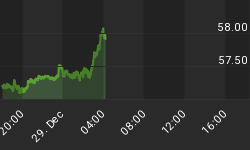Publicly-traded companies and analysts from Wall Street's biggest wire houses are experts at setting low expectations and then exceeding them. From Bloomberg:
Overall, analysts expect earnings for the S&P 500 companies to grow 0.7% from year-earlier levels, down from expectations of 4.2% growth three months ago. "Companies have been able to manage [investors'] expectations a little better," said Mr. Corpina. He said that if companies exceed Wall Street's lowered forecasts for earnings, shares should continue to rise.
Resistance and Trends
As Alcoa kicks off another earnings season this week, the chart of the S&P 500 below paints somewhat of a mixed picture. From a glass half full perspective, price (in black) is above the moving averages (blue, green, & red). The slopes of the moving averages are also positive, which is indicative of an uptrend. From a glass half empty perspective, the S&P 500 faces trendline and horizontal resistance near 1643.

Revenue Growth Could Be A Problem
There are two basic ways to improve the bottom line of a publicly-traded company. Method one involves "selling more stuff" to increase revenue. Method two involves cutting costs via productivity or efficiency gains. From Investor's Business Daily:
Revenue is expected to stay weak with growth of only 1.6%. That's better than Q1's flat revenue "but it's still pretty bad," said Greg Harrison, corporate earnings research analyst with Thomson Reuters. "Revenue is a big issue. It's been slow for several quarters," he said. While companies have grown earnings by cutting costs and restructuring to become more efficient, profit growth has slowed gradually for two years. "They've done all they can to improve their productivity to generate higher margins with very little change in revenue," said Hugh Johnson, chairman of asset management firm Hugh Johnson Advisors. "You wonder how much more they can possibly do. The answer is there isn't a lot more they could possibly do."
Not Over The Hump Yet
At the 6:09 mark of this week's video, tentative technical readings on the S&P 500 and NYSE Composite are discussed. The CCM Market Model has shown improvement, but until the broader market can clear some additional hurdles, the bulls are not out of the "possible reversal" woods. The video covers several hurdles to watch.
Don't Forget Europe
Europe, like the United States, has become very adept at kicking the debt can down the road via patchwork aid packages. The underlying problem of excessive debt has not been addressed in any meaningful way. Therefore, it is prudent to keep the eurozone on our radar. Greece is in line for more assistance. Currently, leaders appear to be following the same can kicking script. From Reuters:
A week of talks in Athens, culminating in promises to reform the public sector, appeared to convince the troika of international lenders - the International Monetary Fund, the European Commission and the European Central Bank - that Greece is committed to rebuilding its economy. That paves the way for Greece to receive 8.1 billion euros ($10.5 billion) as part of its 240-billion euro rescue package, although ministers meeting in Brussels may split up the cash into installments to force through unpopular reforms ranging from sacking public workers to selling state assets. "If we get proof that Greece is living up to everything, then Greece will get its money," Luxembourg Finance Minister Luc Frieden told reporters as he arrived at the meeting.
Investment Implications
As we have noted in the past, all investment choices involve opportunity costs. We all need to make choices in terms of allocating limited resources; would we rather be long or short stocks? Would we rather be in stocks or in bonds?

Just as our models are tentatively bullish, the charts continue to favor stocks over bonds or going short. The weekly chart below shows the performance of a diversified basket of bonds (AGG) relative to the S&P 500 (SPY). Our interest in bonds would increase if the ratio (in black) can clear the blue and red moving averages. In its present form, the chart shows a greater demand for stocks relative to bonds.

The ratio of long (SPY) to short (SH) also favors the stock market bulls. The ratio is in the process of testing a key trendline.

As long as the S&P 500 remains between its 50-day moving average (1626) and 1643, we will remain long, but with a decent bit of cash. If lowered earnings expectations can push the S&P above 1643, we would be more apt to redeploy some additional cash into broad positions, such as the total stock market (VTI), or leading areas, such as small caps (IWM), financials (XLF), and consumer discretionary (XLY). Should the S&P 500 retreat below its 50-day moving average, our short-term bias would become more defensive.
















